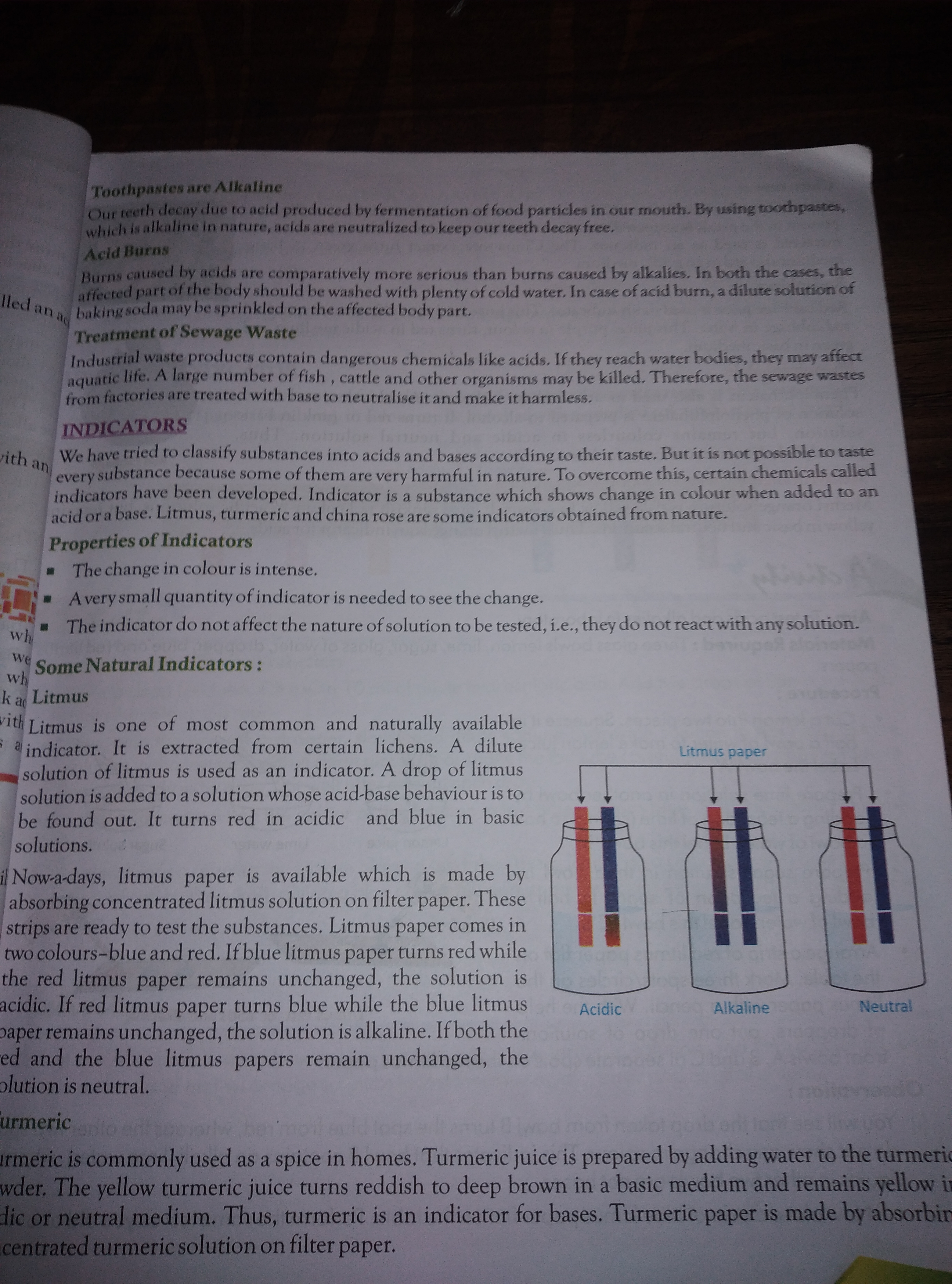What are natural indicators and how do litmus paper and turmeric indicate acidity or alkalinity?

Understand the Problem
The question appears to be about understanding indicators in chemistry, particularly focusing on litmus paper and turmeric as natural indicators for identifying acidic, alkaline, and neutral substances. It is likely asking for an explanation or summary of the text provided.
Answer
Litmus paper turns red in acids and blue in bases. Turmeric turns reddish-brown in bases and stays yellow in acids.
Natural indicators like litmus paper and turmeric change color to indicate the acidity or alkalinity of a solution. Litmus paper turns red in acidic solutions and blue in basic solutions. Turmeric stays yellow in acidic solutions but changes to reddish-brown in basic solutions.
Answer for screen readers
Natural indicators like litmus paper and turmeric change color to indicate the acidity or alkalinity of a solution. Litmus paper turns red in acidic solutions and blue in basic solutions. Turmeric stays yellow in acidic solutions but changes to reddish-brown in basic solutions.
More Information
Natural indicators are substances obtained from natural sources, mainly plants, which help determine the acidic or basic nature of a solution by changing color.
Tips
Ensure the correct interpretation of color changes with natural indicators, as not all indicators display the same color in acidic or basic solutions.
Sources
- Natural Indicators - Types, Characteristics, Reactions and Applications - flexbooks.ck12.org
- Natural Indicators: Examples, Types and Definition - embibe.com
- Turmeric pH Indicator Experiment for Acids & Bases - Play of the Wild - playofthewild.com
AI-generated content may contain errors. Please verify critical information